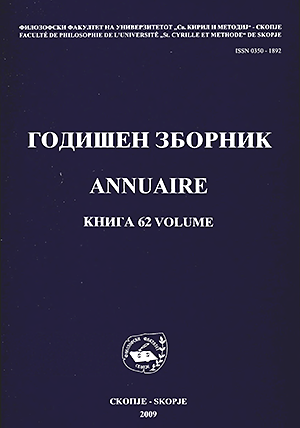INDO-EUROPEAN HYDRONYMIC BASES IN THE MYCENAEAN GREEK DIALECT
DOI:
https://doi.org/10.37510/Keywords:
MYCENAEAN GREEK, HYDRONYMS, TOPONYMS, EPONYMSAbstract
The following hydronymic bases are encountered in the Mycenaean Greek dialect known from the inscriptions on slabs and vases written in the Linear B script: 4 water, river’, *H2epo-4water, flow’. *H2ekwo-4water’ and
*wed- 4wet place, water’ as the heritage of a general Indo-European language. The proposed etymology for the Greek hydronym’ "Ασωπός, that it derives from the Indo-European root *H2epo-4 water, flow’, and based on the Mycenaean evidence from Knossos (KN) where it appears with a voiced labio-velar -qi- (=-#"/-): a-so-qi-jo / Asöq"ios /: Gr. "Ασώπιος (male personal name meaning „from the region of the Black River44) from the toponym "Ασωπός, must be revised and linked with the Indo-European root *H2eto- ‘water, river’ from < Indo-European. *iïsyo-*H2ek"o-, meaning *myo-H2efc'o- ‘Black River’. The author argues that the Mycenaean form m-du-ru-ta/ Widurutas/: Gr. *"Ιδυρύτας ~ "Ιδυρίτης, is derived by means of a secondary dissimilation of the vocals -υ- υ- in -υ-1- from the Indo-European root *wedu- ‘water, life’, (cf Widuro / WiSuros / ~ ’Ζδυρος).
Downloads
Published
Issue
Section
License
Copyright (c) 2009 Miodrag M. Todorović

This work is licensed under a Creative Commons Attribution 4.0 International License.


